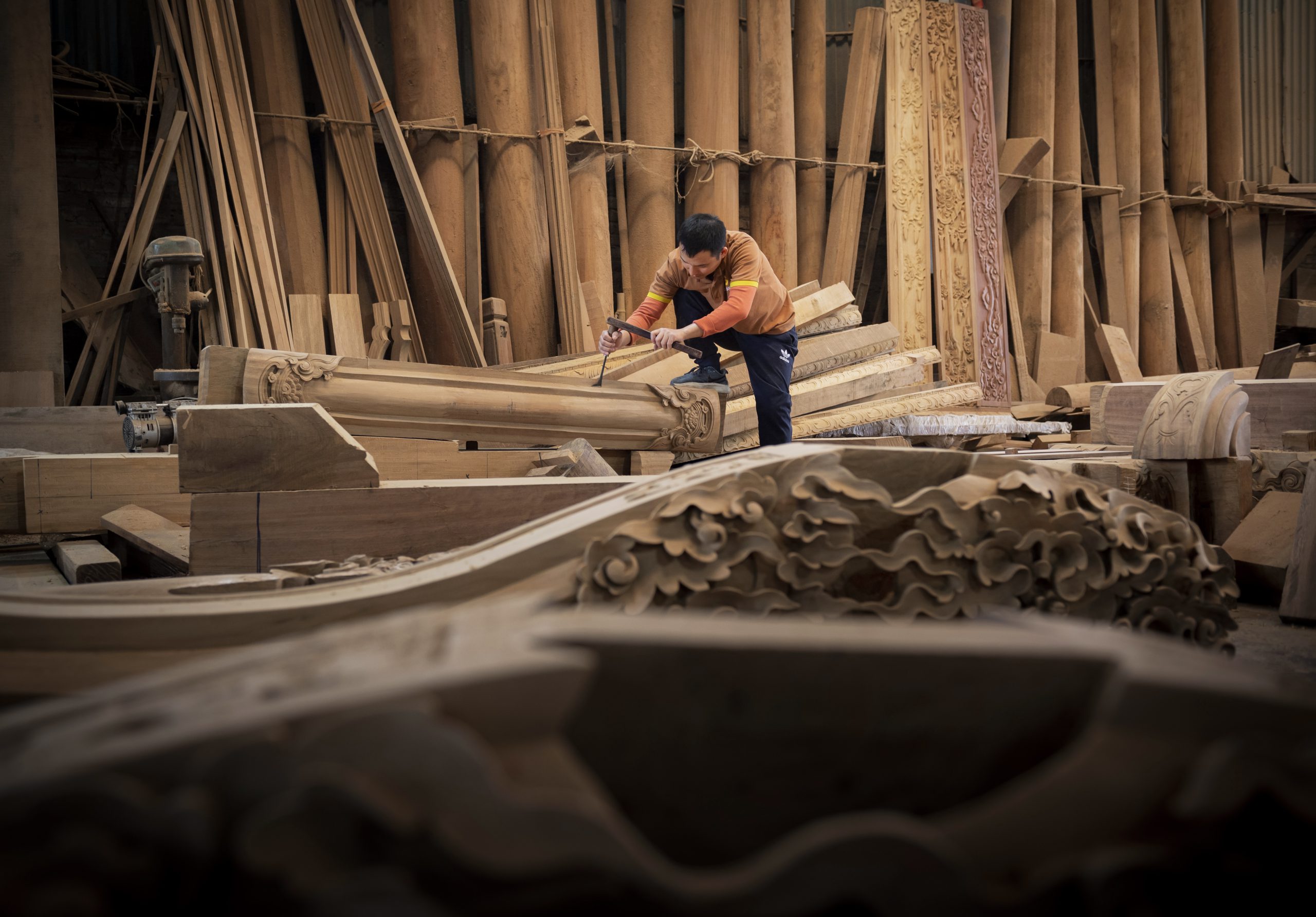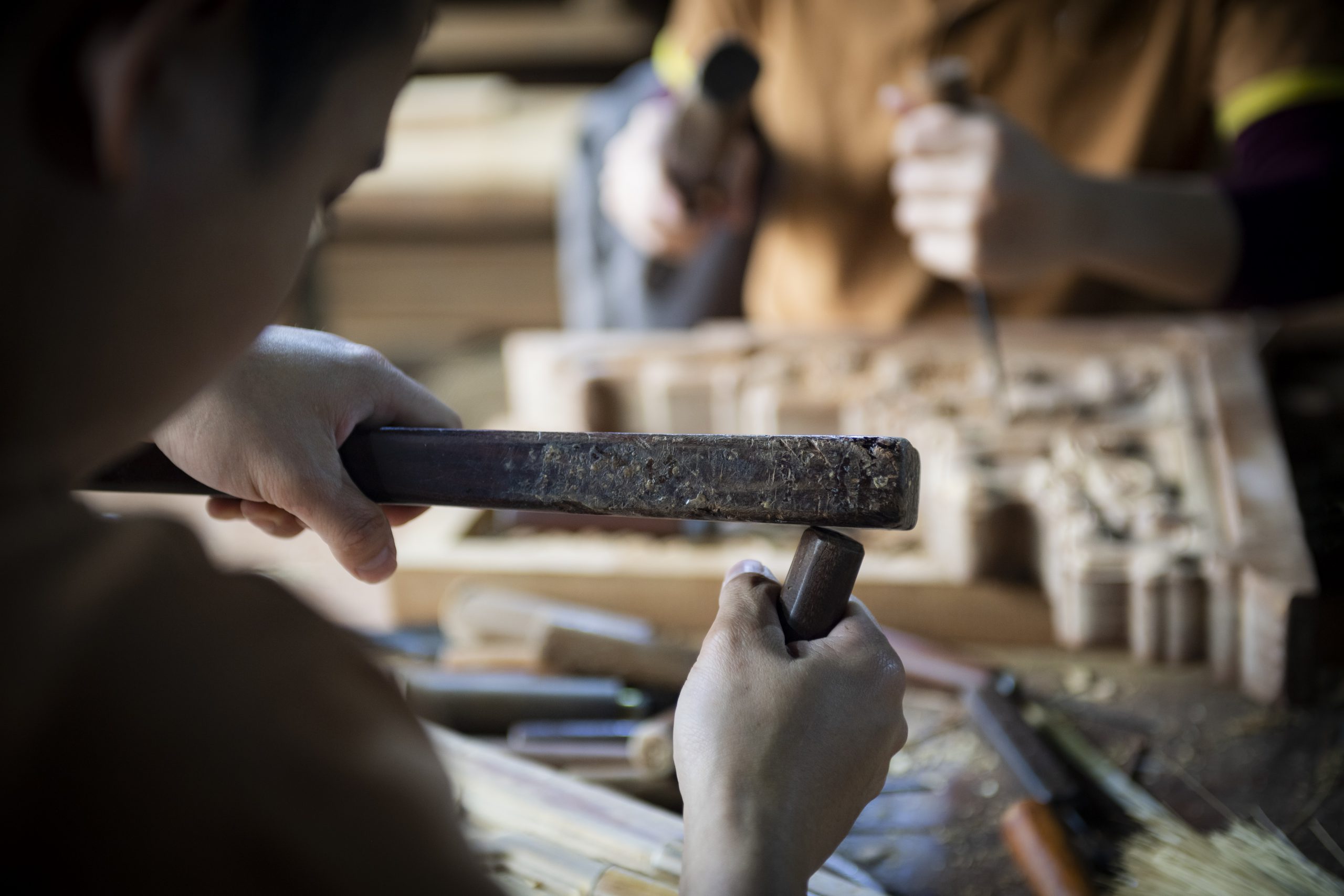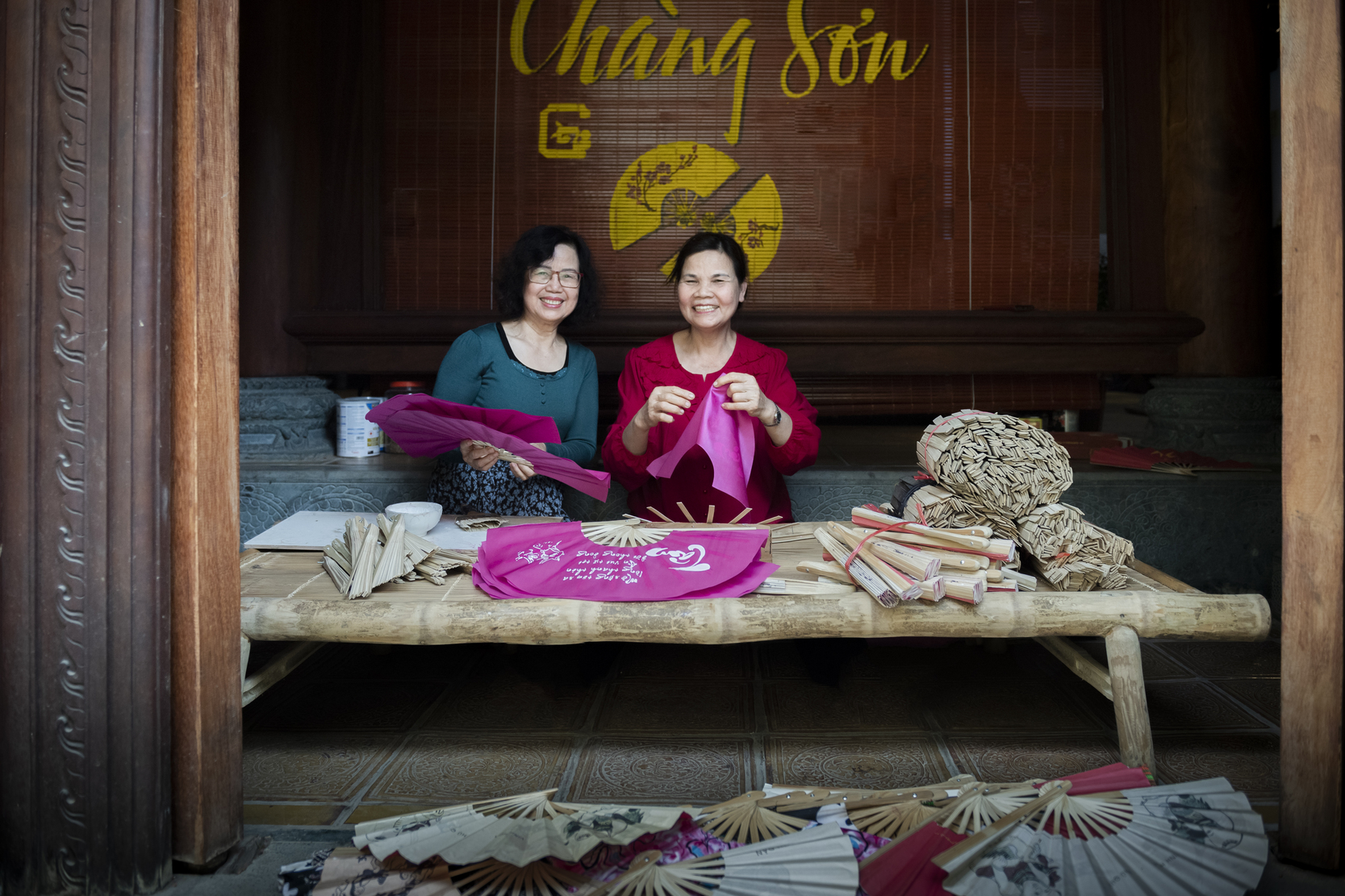Truong Quy
For many centuries, the strip of land to the west of Hanoi has been known as the Doai region, one of the four major towns established during the reign of King Le Thanh Tong, with its core being Son Tay town and the surrounding suburban districts lying between the Day River and the Da River. A gentle song from yesteryear still resonates as it describes this region: “The Day River of my hometown, is the river golden like moonlight or like threads of silk? The moon is golden like ripe rice, round in the corner of the sky.” (Dòng sông quê anh, dòng sông quê em/The river of your hometown, the river of my hometown – by Doan Bong, lyrics by Lai Vu). Silk and rice were once key products in this ancient land, where agriculture prospered, and hundreds of handicrafts were born.

The “insightful” Day River
The Day River, located about 20km from downtown Hanoi, is known in Chinese characters as “Dǐ Jiāng,” where “Jiāng” means “River” and “Dǐ” translates to “Bottom” but phonetically resembles the word “Insightful”. In folk language, the term “Insightful” means to understand thoroughly, referring to wise and profound people. This word describes the character of those in the handicraft industry, which is especially developed in villages along the Day River.
The two districts of Phuc Tho and Quoc Oai, located on the right bank of the Day River, are home to 26 recognized craft villages, specializing in everything from agricultural processing to woodworking. They form an ecosystem of raw materials and finished products that are part of everyday life. For instance, in Phuc Tho district, there is a tailoring village in Thuong Hiep hamlet, Tam Thuan commune. Right next to this lies a carpet-weaving village in Phung Thuong commune. In Quoc Oai district, there are craft villages along the Day River. Abundant in bamboo and rattan, Thach That district boasts villages that excel in wickerwork, such as Muon village and Trai Do hamlet in Tuyet Nghia commune, Nghia Huong and Liep Tuyet communes in Quoc Oai district, and the bamboo and rattan weaving villages of Phu Hoa, Thai Hoa, and Binh Xa hamlets in Thach That district.

The ancients said, “The South has its bridges, the North has its pagodas, and the Doai region has its communal houses”—a nod to the outstanding woodworkers in this region. The artisans who built these communal houses hailed from the nearby craft villages of Quoc Oai and Thach That districts. The semi-mountainous region of Thach That, a forest gateway centuries ago, is still home to famous woodworking villages such as Chang Son, Canh Nau, Di Nau, Huu Bang, Huong Ngai, Ngo Sai, Yen Quan, Nghia Huong and Ngoc Than communes. Among these, villages specializing in making ancient houses are often closely connected with villages producing wooden statues and religious items, like Son Dong village in Hoai Duc district, across the Day River.
Food-producing craft villages also created famous brands known far and wide, such as So village’s vermicelli ( in Cong Hoa commune, Quoc Oai district) and Thach village’s nutty ginger sticky rice bars. They are all located in agricultural areas by the Day River. These craft villages, along with the beautiful communal houses and pagodas in the area, form a vibrant and colorful suburban belt around Hanoi, contributing to the unique character of the Doai region. Visitors coming to So Communal House, Thay Pagoda, Hoang Xa Cave (Quoc Oai), Tay Phuong Pagoda (Thach That), and Ha Hiep Communal House (Phuc Tho), etc. are not only there to admire fine architectural works but also to experience the lifestyle of local residents who create well-known products.

The Mountain of the God of Fortune
When speaking of the Doai region, one must mention Ba Vi Mountain, a mountain range that has entered the collective consciousness of the Vietnamese people as sacred. Ba Vi Mountain is associated with the worship of the Spirit of Mount Tan Vien, also known as the God of the Mountain, one of “The Four Immortals” – the four greatest deities in Vietnam’s ancient belief system. Vietnamese people have worshiped the God of the Mountain as a deity of fortune since the era of the legendary Hung Kings, symbolizing the ancient Vietnamese people’s efforts to survive. Ba Vi Mountain lies in Son Tay, the westernmost part of the Doai region from Hanoi, surrounded by the Red River and the Da River to the north and west, along with the Tich River to the east, all of which have created a region with a mix of alluvial plains and forests.
This unique ecosystem laid the foundation for industrial and horticultural crop farming villages in the foothills of Ba Vi district, such as the nine villages in Ba Trai commune that process tea, or the traditional medicine processing crafts of the Dao people. Villages specializing in making tea, traditional medicine, cassava flour, and arrowroot vermicelli are clustered around semi-mountainous villages bordering the Red River and the Da River, marking a lifestyle that humbly relies on nature. Ba Vi Mountain really is a “mountain of fortune” for the Vietnamese people.
Son Tay draws tourists thanks to its famous cultural relics such as the Son Tay ancient citadel, Duong Lam ancient village, Mia Pagoda, Va Temple, and the temples dedicated to the two kings Phung Hung and Ngo Quyen. Along with these sites, visitors like to explore local delicacies in the area’s craft villages, such as Phu Nhi village’s rice flour cakes, Ngoc Kien village’s embroidery craft, Duong Lam village’s peanut and sesame candies, and Mong Phu village’s fermented soybean paste. “Ba Vi has white milk, Khu Chay has golden rice” is a once-popular song about the province of “Ha Tay, the land of silk”. Ha Tay was a former province of Vietnam, encompassing the areas of Ha Dong and Son Tay. Ha Tay of old was known for its dairy farms. Today, many craft villages in the Ba Vi area still supply dairy products, creating a brand for the Doai region.
One old song reminds us that “the Tich and Da rivers flow long like endless silk”. Another tune from the 1960s tells of a cow-herd named Ho Giao. These old songs celebrate the talent and diligence of the Doai region’s artisans. The villages are always alive with the glow of cooking fires and drying kilns and the bustling sounds of weaving and plaiting throughout the districts in the western region of the Day River, continuing the flow of life without end. The hands of people from the Doai region are not delicate, and their voices are rough, but these are the results of a life devoted to labor, tirelessly creating products for people. This “land of a hundred crafts” has built a strong identity, where traces of traditional customs endure.










